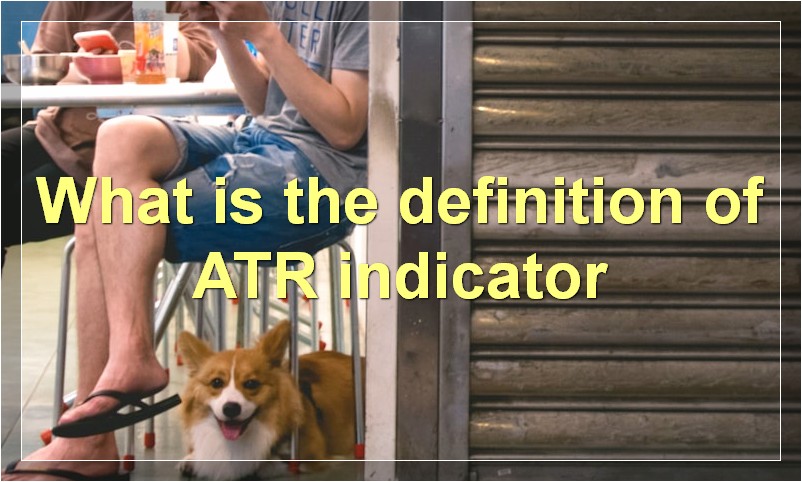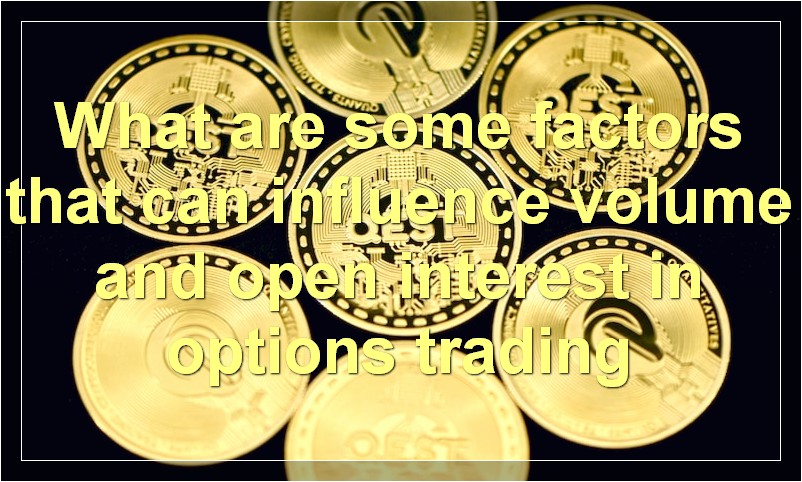If you’re looking to get started in options trading, it’s important to understand the role that volume and open interest play.
What is the definition of volume in options trading
When it comes to options trading, volume is one of the most important metrics to keep track of. Volume represents the number of contracts that are traded in a given period of time, and it can give you valuable insights into the strength of the market.
There are two main types of volume that you need to be aware of: total volume and average volume. Total volume is simply the number of contracts that are traded in a day. Average volume, on the other hand, is the number of contracts that are traded in a day, divided by the number of trading days in that period.
Volume can be a helpful indicator when you’re trying to decide whether to enter or exit a trade. If the market is moving with strong volume, it typically means that there’s a lot of interest from buyers or sellers, and you can see how this might impact the price of the option.
Of course, it’s important to remember that volume is just one piece of the puzzle when it comes to options trading. You also need to pay attention to other factors like volatility and open interest. But if you can keep an eye on all of these metrics, you’ll be well on your way to becoming a successful options trader.
What is the definition of open interest in options trading

Open interest is the number of contracts of a particular option that are outstanding, or not yet closed. It is a measure of market activity and liquidity, and can be used to identify potential trends in the underlying asset.
How do volume and open interest affect options prices
When it comes to options prices, volume and open interest are two important factors to consider. Here’s a look at how each of these factors can affect options prices.
Volume is the number of contracts that are traded in a given period of time. When there is high volume, it means that there is more interest in the options market and this can lead to higher prices. On the other hand, when volume is low, it can indicate that there is less interest in the options market and this can lead to lower prices.
Open interest is the number of open contracts that are outstanding in the market. This is different from volume, which is the number of contracts that are traded in a given period of time. When open interest is high, it means that there are more contracts outstanding and this can lead to higher prices. On the other hand, when open interest is low, it can indicate that there are fewer contracts outstanding and this can lead to lower prices.
How is volume calculated in options trading
In options trading, volume is the number of contracts that are traded in a given period of time. It is used to measure the liquidity of the market and to identify potential trends.
How is open interest calculated in options trading
Open interest is the number of option contracts that are outstanding and have not been exercised or closed. It is a measure of market activity and liquidity, and it is used by traders to gauge the strength of a trend. Open interest is calculated by adding the total number of new contracts traded during the day to the previous day’s open interest.
What are some factors that can influence volume and open interest in options trading

Open interest and volume are two important measures when trading options. Open interest is the number of open contracts for a particular security or commodity. Volume is the number of contracts traded during a specified time period. These measures can be used to gauge market activity and liquidity, as well as provide clues about future price direction.
There are a number of factors that can influence open interest and volume in options trading. For example, economic news releases can cause investors to buy or sell options contracts. This can lead to an increase in volume and open interest. Additionally, technical factors such as support and resistance levels can also influence trading activity.
Finally, it’s important to keep in mind that options are often most active just before expiration. This is because many options contracts will expire worthless if the underlying security doesn’t move in the desired direction. As a result, there can be a surge in activity as traders attempt to close out their positions before expiration.
What is the relationship between volume and open interest in options trading
There are a few key relationships between volume and open interest in options trading that are important for traders to understand. First, a rise in volume usually corresponds with a rise in open interest. This makes sense because more trading activity generally means more new positions being opened. Second, a decline in volume can sometimes precede a decline in open interest. This is because as volume starts to drop, some traders may start to close out their positions. Finally, high volume often indicates high liquidity, which is important for traders who need to enter or exit a position quickly.
How do changes in volume and open interest impact options traders
When it comes to options trading, changes in volume and open interest can have a big impact. Volume is a measure of how many contracts are traded in a given period of time, while open interest is a measure of the number of outstanding contracts that are held by traders.
Changes in volume can be a good indicator of trader sentiment. If there is a sudden increase in volume, it could be an indication that traders are bullish on the market and are buying up contracts. Conversely, if volume decreases, it could be an indication that traders are bearish and are selling off their contracts.
Open interest can also give clues about trader sentiment. If open interest decreases, it means that fewer traders are holding onto their contracts, which could be an indication that they are bearish on the market. On the other hand, if open interest increases, it means that more traders are holding onto their contracts, which could be an indication that they are bullish on the market.
Changes in volume and open interest can impact options traders in a number of ways. By paying attention to these changes, traders can get a better sense of where the market is heading and make more informed decisions about their trades.
What strategies can options traders use to take advantage of changes in volume and open interest
Options traders can use a number of strategies to take advantage of changes in volume and open interest. One common approach is to use volume as a leading indicator, buying or selling options contracts based on the belief that the underlying security will move in the same direction.
Another strategy is to use open interest as a gauge of market sentiment. If options contracts are being bought up rapidly, it could be an indication that the market is bullish on the underlying security. Conversely, if options contracts are being sold off rapidly, it could be an indication that the market is bearish.
Of course, these are just two of many possible strategies that options traders can use to take advantage of changes in volume and open interest. The key is to find the approach that best suits your own trading style and risk tolerance.
What are some common misconceptions about volume and open interest in options trading
There are a few common misconceptions about volume and open interest in options trading. Firstly, many believe that a high volume means there is a lot of interest in the market. This is not necessarily true. A high volume can simply mean that there are a lot of trades being made, but not necessarily that there is a lot of interest. Secondly, some believe that a high open interest means that there is a lot of liquidity in the market. However, this is also not necessarily true. A high open interest can simply mean that there are a lot of contracts outstanding, but not necessarily that there is a lot of liquidity.

